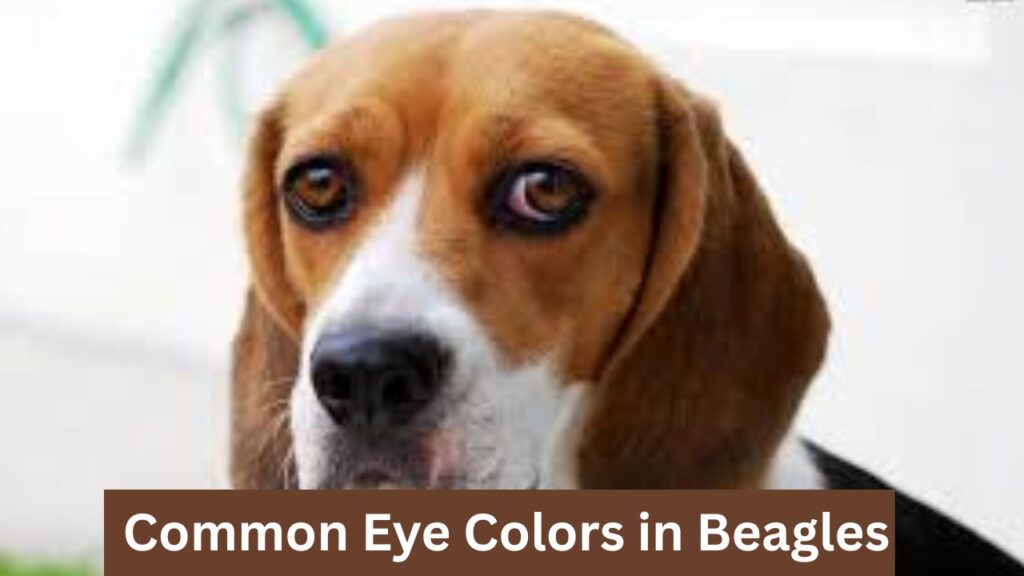
Beagles, known for their endearing personalities and stunning coats, are a beloved breed for many families. However, one interesting question often arises among potential Beagle owners: Can Beagles have blue eyes? While it’s not common, the genetics behind eye color in Beagles can be fascinating. In this article, we will explore the possibility of Beagles having blue eyes, delve into the genetics of eye color, and discuss the factors influencing eye color in this breed.
Understanding the Genetics Behind Eye Color
Eye color in dogs is determined by genetics, much like in humans. The primary pigment responsible for eye color in dogs is melanin. The more melanin present, the darker the eye color will be. Dogs with less melanin tend to have lighter-colored eyes, such as blue, green, or amber. In most dog breeds, brown or amber eyes are most common, while lighter colors like blue are rarer. The specific genes involved in determining eye color can be influenced by breed-specific traits.
Common Eye Colors in Beagles

Beagles typically have warm, brown eyes, which is the standard for the breed. These brown eyes are often large, round, and expressive, contributing to their friendly and approachable demeanor. Amber eyes are also seen occasionally, particularly in lighter-colored Beagles. However, while brown is the dominant color, variations like blue or green can occur in some instances, though they are very rare in Beagles.
The Possibility of Blue Eyes in Beagles
Can Beagles have blue eyes? The short answer is yes, but it is exceptionally rare. Blue eyes in Beagles are typically seen in puppies at birth, but most will develop brown or amber eyes as they mature. In some cases, Beagles with a particular genetic background may retain blue eyes into adulthood, but this is unusual. Often, blue eyes in Beagles may be linked to certain genetic conditions or mixed breeding.
Genetic Factors Influencing Blue Eyes
Blue eyes in Beagles may result from the merle gene, which can cause a variety of color variations in a dog’s coat and eyes. However, merle Beagles are relatively uncommon, and the presence of merle gene can sometimes be associated with hearing or vision problems. It’s important to note that Beagles are not typically a merle breed, so if a Beagle does have blue eyes, it may be due to a genetic anomaly.
Other Unusual Eye Colors in Beagles
While blue is the most sought-after unusual eye color, Beagles can also have other less common eye colors. Some may have eyes that appear green, which occurs when there is a blend of yellow and blue pigments. Additionally, some Beagles may have two different colored eyes, a condition known as heterochromia. This phenomenon is rare but can occur in certain breeds, including Beagles.
Factors That Influence Eye Color in Beagles
Several factors can influence the eye color of a Beagle, including:
- Genetics: As mentioned, the most significant factor influencing eye color is genetics. Specific genes responsible for pigment production play a crucial role in determining whether a Beagle has brown, blue, or amber eyes.
- Age: Beagle puppies are born with blue or gray eyes, but as they grow older, their eyes usually darken. This is a typical development in many dog breeds, not just Beagles.
- Health Conditions: Certain health conditions, like heterochromia or cataracts, can cause changes in eye color. In rare cases, a Beagle’s eyes might appear blue if they suffer from specific eye-related issues.
- Breed-Specific Characteristics: Although Beagles do not typically have blue eyes, variations can occur due to outcrossing with other breeds. If a Beagle is bred with a breed that has a higher incidence of blue eyes, the trait may be passed on.
Research and Studies on Beagle Eye Colors
Scientific research on Beagle eye colors is relatively limited compared to other aspects of the breed. However, studies have shown that variations in coat color and eye color can occur due to recessive genes, which means both parents must carry the gene for a specific eye color to be expressed in their offspring. The research highlights that blue eyes are not a typical trait of Beagles, though they can occur under specific genetic conditions.
Breeding for Specific Eye Colors in Beagles
Although Beagle breeders do not typically aim for blue eyes, some may intentionally breed dogs with traits that could lead to lighter-colored eyes. Breeding for specific eye colors, especially in non-traditional colors like blue, can sometimes result in health complications. This is why responsible breeders prioritize the health and temperament of the breed over aesthetics like eye color.
It’s essential for prospective Beagle owners to understand that the blue-eyed Beagles they see in media or advertisements are often a rare exception, not the norm. If blue eyes are your primary concern when adopting or purchasing a Beagle, it’s important to seek a breeder who is ethical and well-versed in responsible breeding practices.
Caring for Beagles with Unique Eye Colors
Caring for Beagles with unique eye colors, such as blue or green eyes, doesn’t differ significantly from caring for any other Beagle. However, extra attention should be given to their eyes to ensure no underlying health issues are present. Regular vet check-ups are vital, especially if the Beagle has an unusual eye color that might be linked to vision problems.
Additionally, Beagles with lighter-colored eyes may be more sensitive to bright light, so it’s a good idea to protect them from prolonged exposure to harsh sunlight. Always keep an eye out for any signs of discomfort or irritation, and consult with a vet if you notice any changes in their vision.
Other Popular Blue-Eyed Dogs
If you’re fascinated by the idea of owning a dog with blue eyes, there are several other breeds known for this trait. Some of the most popular blue-eyed breeds include:
- Siberian Huskies: Known for their striking blue eyes, Huskies are a breed where blue eyes are quite common.
- Australian Shepherds: Many Australian Shepherds, especially those with merle coats, have beautiful blue eyes.
- Border Collies: This intelligent breed is often seen with blue eyes, particularly in merle varieties.
- Dalmatian: Though rare, some Dalmatians are born with blue eyes.
Lesser-Known Dog Breeds With Blue Eyes
While Huskies and Australian Shepherds are well-known for their blue eyes, some lesser-known dog breeds also carry this trait. These include:
- Catahoula Leopard Dogs
- Weimaraners
- Alaskan Malamutes
- American Eskimo Dogs
These breeds, like the Beagle, may not always exhibit blue eyes, but when they do, it’s certainly a striking feature.
Conclusion
In conclusion, while Beagles can occasionally have blue eyes, it’s quite rare and often associated with specific genetic factors. Blue eyes are not typical for the breed, and any Beagle that does have them might require careful attention to ensure their eye health. For those fascinated by the idea of owning a dog with blue eyes, there are other breeds where this trait is more common. Ultimately, when considering a Beagle, it’s essential to focus on their friendly temperament, intelligence, and adaptability as the primary factors for choosing them as a companion.
Understanding the genetics behind eye color and the factors that influence it can help potential Beagle owners make informed decisions. If you’re set on having a blue-eyed Beagle, always consult with a reputable breeder who prioritizes health and well-being over specific aesthetic traits.
RELATED POSTS
View all



